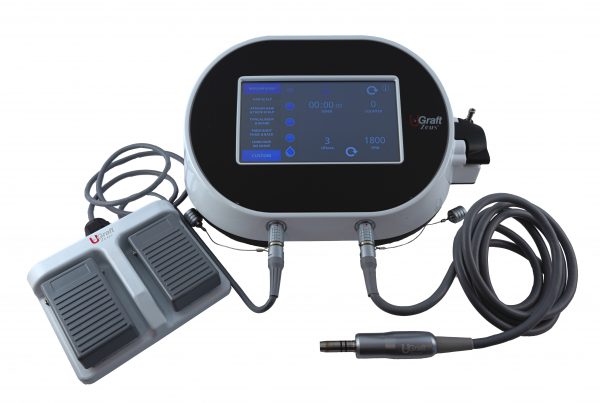Hair transplant patients expect to see evidence of new growth in the 3rd to 4th month with matured results more apparent at 12 to 18 months. In reality, however, there are many instances where this is not the case. Instead, they may see awkward patterns of baldness, sparse sproutings or patches of hair, scarring and even disfigurement. Failed procedures that lead to disappointing growth are more common than most people think. Worse yet, with conventional hair restoration techniques, the individuals who fall victim to such outcomes are often ineligible for comprehensive repair surgeries. This is due to having a depleted head donor supply. The patient in this case report experienced this poor outcome after several hair transplant surgeries performed elsewhere. The Dr.UGraft™ advanced hair transplant system, featuring the Intelligent Punch™ (Dr.UPunch i™) enabled hair transplant repair and poor growth correction.
Before Hair Transplant Repair Poor Growth Correction with Dr.UGraft™
Failed growth after a hair transplant procedure is due to the inability of grafts to survive in the recipient area. This patient had undergone several hair transplant procedures in which the grafts failed to survive long-term.
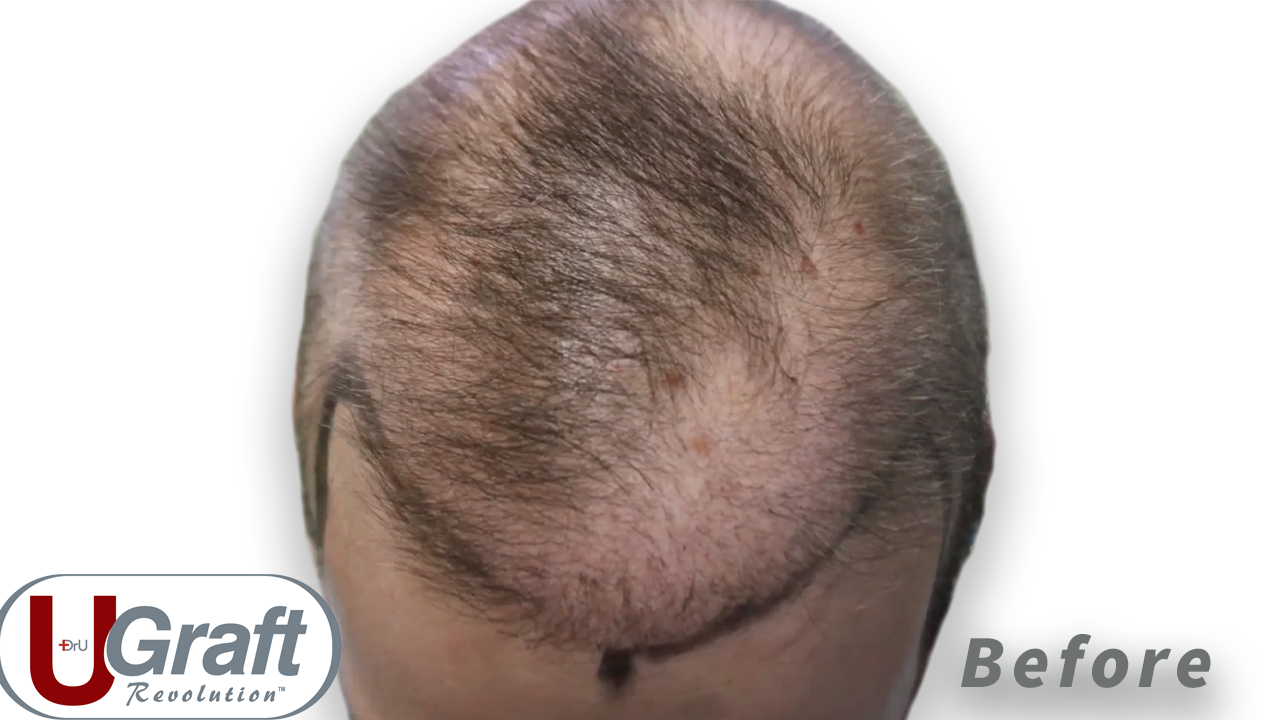 View of the top of the patient’s head before his hair transplant poor growth correction. Odd patterns of balding can be seen.
View of the top of the patient’s head before his hair transplant poor growth correction. Odd patterns of balding can be seen.
The result was patchy growth, odd patterns of balding, and a depleted head donor area preventing him from seeking a repair procedure using conventional follicular unit extraction standards.
A Dr.UGraft™ hair transplant repair enabled the use of 3150 beard, 1550 head, 1300 nape, and 500 chest hair grafts.
The Dr.UGraft™ Approach: Hair Transplant Repair & Poor Growth Correction
In order to ensure the best hair transplant repair results, it is critical to avoid factors which previously led to poor results from other procedures. These include:
- Avoiding graft damage due to mechanical tools and dehydration.
- Avoiding transection of angled body hair growth.
When using a regular straight Follicular Unit Extraction punch, the risk of severing these hair follicles becomes much greater.
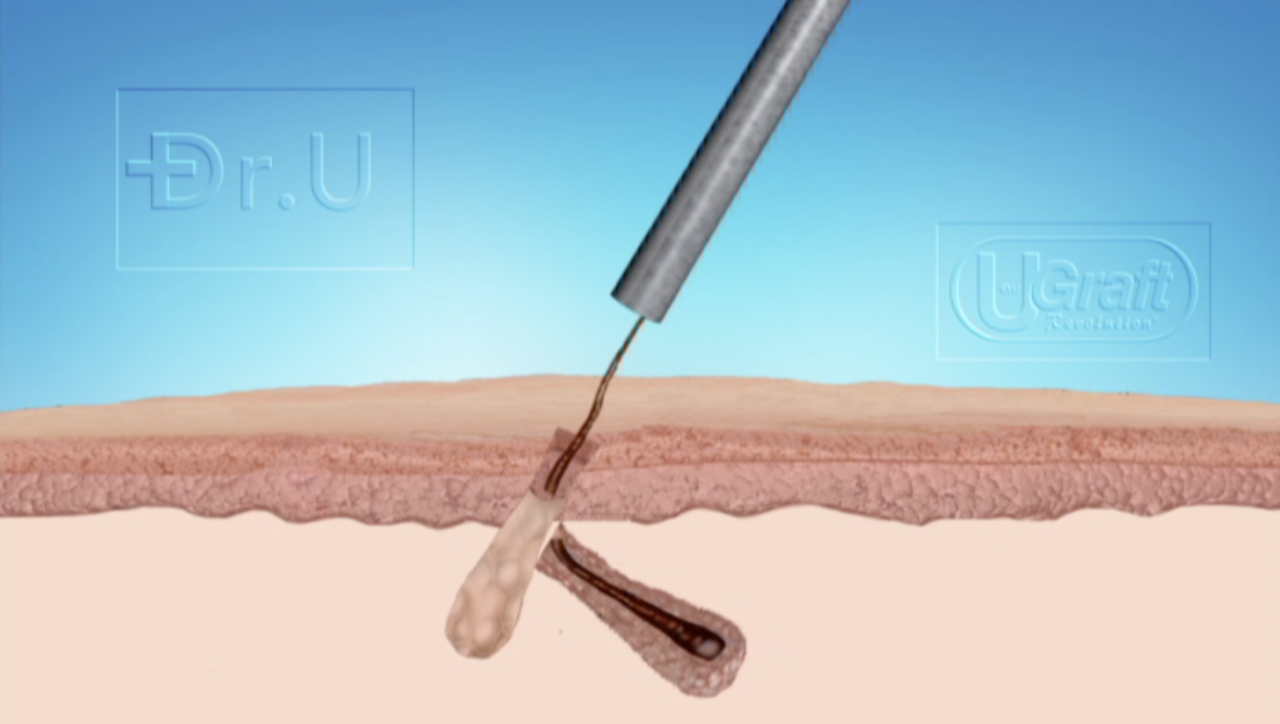 Conventional punches often fail to safely extract body hair due to the angled growth underneath the skin, resulting in transection. The Intelligent Punch™ (Dr.UPunch i™) avoids this through several key features, including its uniquely flared tip and graft grip, pull, score, and release mechanisms.
Conventional punches often fail to safely extract body hair due to the angled growth underneath the skin, resulting in transection. The Intelligent Punch™ (Dr.UPunch i™) avoids this through several key features, including its uniquely flared tip and graft grip, pull, score, and release mechanisms.
The Intelligent Punch™ (Dr.UPunch i™) relies on an initial shallow, circular incision which cuts away from the graft. This is followed by a graft grip, pull, score, and release mechanism to pull features to separate the graft from its surroundings.This patented graft pulling system is completely inherent to the Punch design all by itself. There is no vacuum or suctioning involved.
Air exposure is the leading cause of graft death. The fluid irrigation system of Dr. U Intelligent Punch ensures that follicles stay well hydrated and healthy throughout the extraction process. With this premier technology comes new possibilities for patient cases that would otherwise be considered hopeless.
Growth After Hair Transplant Surgery Result Photos
Below are the results of this hair transplant repair poor growth correction after 12 months.
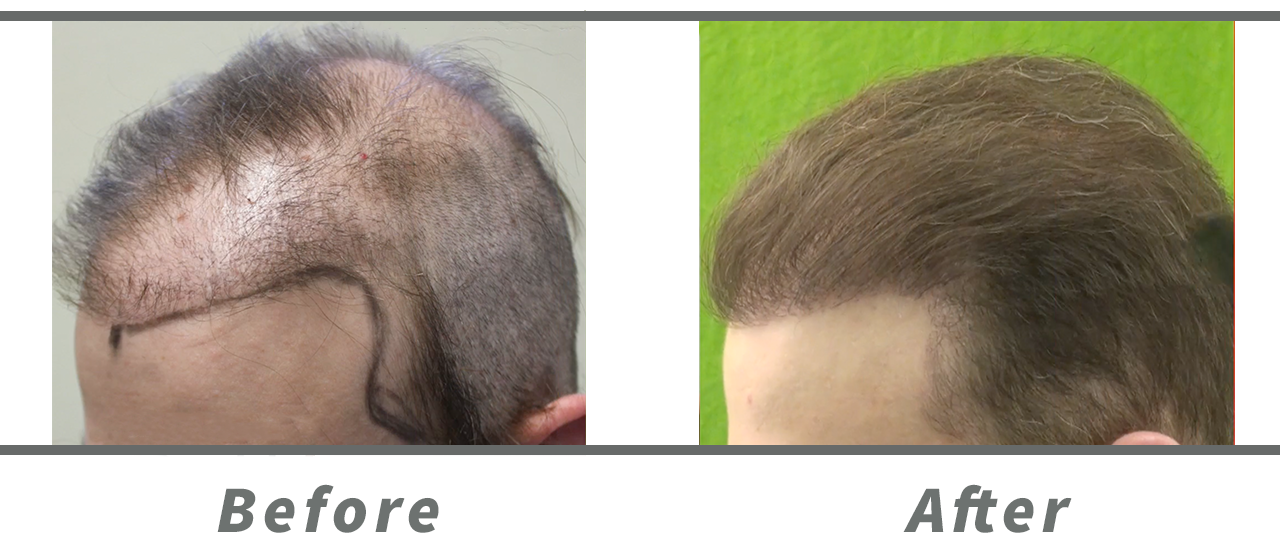
The Dr.UGraft System helped this patient correct poor growth after previous hair transplant at other clinics.*
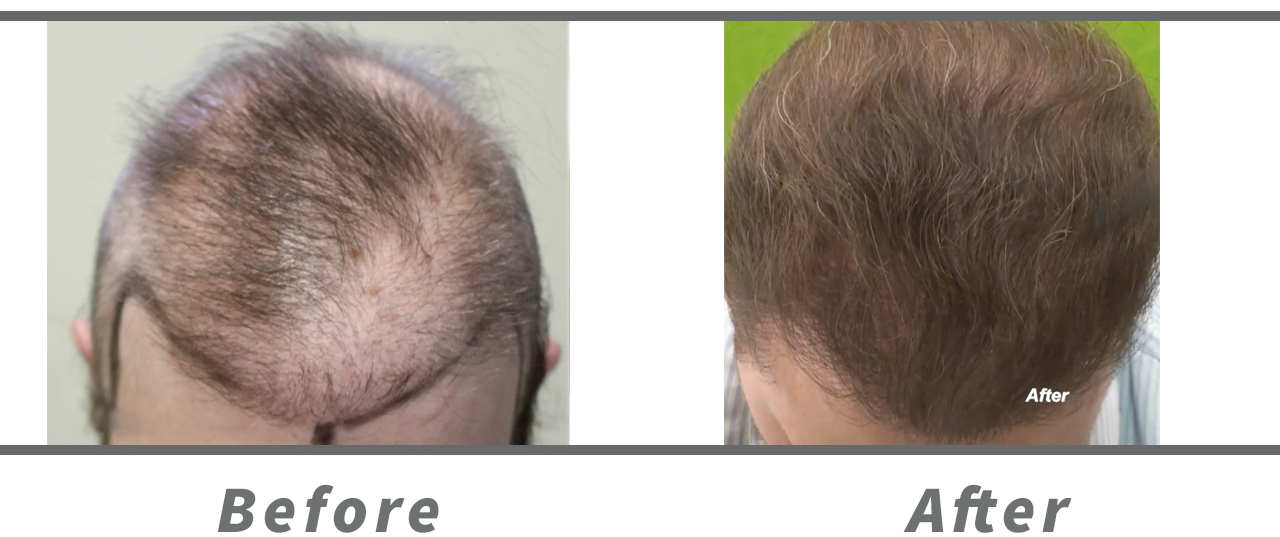
A view of the top of the patient’s head before and after his hair transplant repair poor growth correction.*
This case is a real-life example of a successful repair performed to reverse the signs of poor hair transplant growth from past surgeries.
Using the Intelligent Punch™ (Dr.UPunch i™), the patient was able to finally achieve the coverage he wanted, restoring both his outer appearance and inner self-confidence.
Video: Full Results of Hair Transplant Repair Poor Growth Correction
Watch the video to see the full results of the patient’s hair transplant procedure to fix poor growth.
To learn how to become a Dr.UGraft™ provider, click the button below.
[maxbutton id=”5″ ]
Frequently Asked Questions – Hair Transplant Repair Poor Growth Correction with Dr.UGraft™
How do I know if my donor hair will grow? What are the hair transplant growth stages?
New growth after hair transplant surgery is typically seen 4-6 months after the procedure. The full results of a hair restoration procedure, however, can take 12-18 months to fully manifest. If you are concerned about slow hair transplant growth, however, you may want to schedule a follow-up with your provider.
What determines good growth after hair transplant surgery?
There are several factors that can be addressed in order to increase the likelihood of growth after hair transplant surgery. This includes avoiding graft failure due to dryness, and other graft injuries during extraction. The Intelligent Punch™ (Dr.UPunch i™)
Further Reading
Learn how Dr.UGraft™ integrates innate depth control in its Intelligent Punch (Dr.UPunch i™).


